Many of you will remember the announcement of temporary closures of 70 historic sites across Scotland in early 2022 for high-level masonry inspections. This was before I worked for Historic Environment Scotland, but I was a Historic Scotland member. I remember the disappointment, especially as I was eager to visit Linlithgow Palace for the first time – a place I’d admired long before joining HES.
However, we’ve come a long way since then, reopening or increasing access at over 50 sites to date (including at Linlithgow), creating a wealth of information about the challenges and approaches about climate change and interventions in terms of historic buildings that we’re sharing with peers as well as creating a new qualification for the sector.
We’re also continuing to reopen and increase access at further sites and are rolling the programme into our activity.

Members of our Conservation Team at Dryburgh Abbey
Understanding the closures and inspections
While the access restrictions disrupted visits, they were crucial for ensuring the safety of our historic buildings and visitors. Inspections require meticulous attention to detail, specialised equipment, and favourable weather conditions. They simply can’t be rushed.
Our sites span over 5,000 years of history and have been subject to different interventions over the years, including works in their more recent history. Although well-meaning at the time, some work has now proven counter intuitive to the accelerating ravages of climate change.
A multi-stage process
Since beginning the programme, we’ve inspected 67 sites and reopened 51 – plus more to come! Some of the reopened sites have temporary restrictions in place while we address any remaining concerns, but it’s important to us to open up as much as we can to our visitors whenever possible.
It’s not a one size fits all process. Our specialist teams meticulously examine each site, providing the necessary care – like doctors conducting a thorough check-up.
This may involve cleaning, repairs, or further inspections depending on the specific needs of the site.
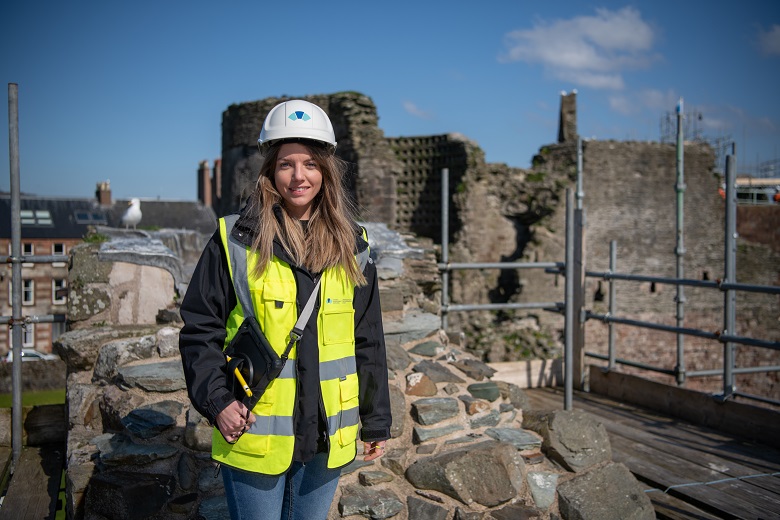
This approach has allowed us to reopen many sites, like Caerlaverock Castle. Although there are some restrictions still in place there, you can explore the majority of the castle and have a great day out.
The initial inspections are nearing completion, but the work continues. Now, our team is moving on to inspect all our structures above 1.4 meters. They’re conducting detailed tactile inspections (literally inspecting each stone by hand). The good news is that in the future, most sites won’t need to be closed for inspections.
Challenges and solutions
Some sites require more extensive work, and we’re actively recruiting skilled professionals like architects, conservators, and stonemasons to tackle these issues.
Some of the challenges we face include:
- Weather exposure: Coastal castles face the brunt of the elements, requiring repairs to address issues like erosion and salt damage.
- Completeness of site: Properties in a much more ruinous state can require more extensive repairs because of years of ongoing deterioration which can make them more susceptible to the elements.
- The geology of the stone: Different types of stone have varying vulnerabilities. Sandstone, for example, is more susceptible to weathering than granite, requiring specialist techniques and materials for repairs.
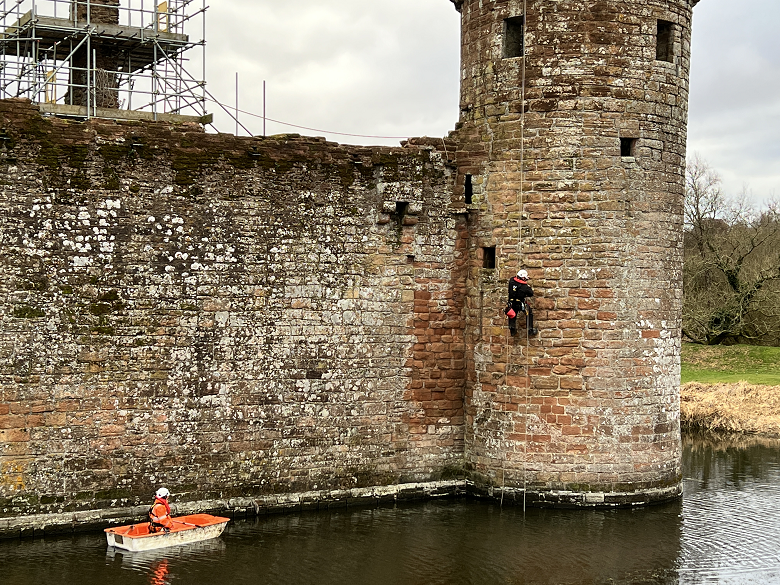
The defensive features of castles, such as the moat at Caerlaverock, can make access a challenge for our inspection teams.
- The complexity of the repairs: At some sites, intricate carvings, often depicting religious scenes or heraldic designs, require meticulous attention from specialist conservators using traditional techniques and materials. In some cases, 3D scanning technology is used to create detailed replicas of damaged sections, ensuring the preservation of these historic details.
- A shortage of skills: The heritage sector faces a shortage of skilled professionals, materials, and equipment, which can impact repair timelines. Additionally, the weather and the unique characteristics of each site add complexity.
- Scotland’s weather: While we have anticipated timescales for working on the remaining sites, these are flexible and can be impacted by factors like weather and the intricacy of the repairs.
Let’s take a look at some of the progress over the past few months:
Bothwell Castle
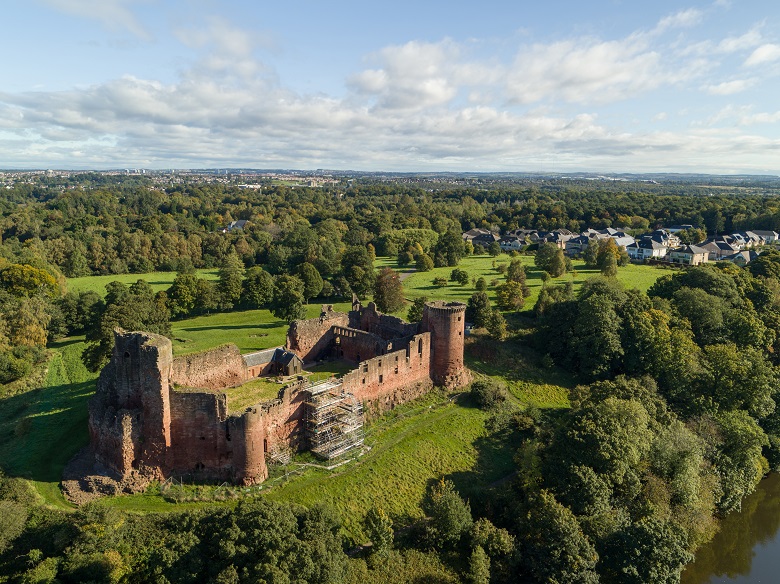
The team at Bothwell Castle is busy making arrangements to reopen the castle, which is due to welcome the public back this Easter weekend. Look out for the new door surround for the exhibition cellar – it was made specially by our blacksmith. We’ve also been cleaning and painting in preparation for throwing the doors open once again!
Visitors can explore the grand castle courtyard and delve into the history of the Douglas family. The middle cellar, previously only accessible to wedding parties and educational groups, will now be open for creative activities using our art-cart materials.
The Douglas Tower might take a little longer to reopen as it provides a nesting haven for barn owls. The Donjon Tower and Great Hall remain closed for repairs, but we’ll keep you updated on their progress.
Bonawe Iron Furnace
The grounds at this fascinating industrial heritage site have been open for a while now. This season we’ll be opening more of the site but some repairs are weather-dependent. The ridge on the stone iron ore building, which houses the exhibition space, needs re-bedding. For this we’ll use lime mortar, so we have to wait until the frosty mornings have passed as the mortar can’t be used when it’s colder than 4 degrees Celsius. We’ll begin these repairs just after Easter and expect them to take about six weeks.
A section of the east charcoal store will also have temporary access restrictions until repairs are completed. Staff will be on-site at the iron furnace from 29 March to show you around and answer your questions.
Rothesay Castle
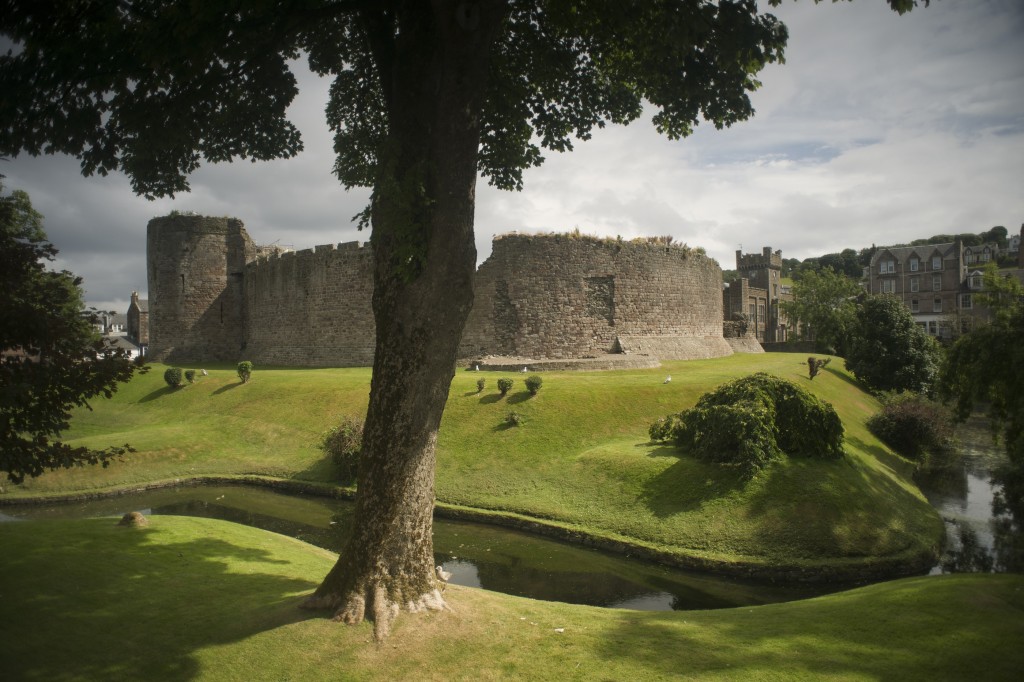
We were thrilled to welcome visitors back to this castle for the first time in almost four years at the start of March. Inspecting this property was challenging due to its moat, but the necessary repairs are complete.
If you’re visiting the castle, look out for the newly repaired bridge that will take you across the moat. The timber bridge is 70 years old and showing signs of its age. Making sure it was sound was essential to getting works teams and equipment across the moat to the castle. Our dedicated team tackled this project over the winter, braving windy conditions to complete the work. Some sections had to be replaced and the whole bridge was given a protective waterproof finish. It will be sound for another 5 years, after which a full deck replacement is planned.
With the bridge complete, our conservation team addressed the castle’s interior. They removed any winter debris and tackled the effects of harsh winter frosts, which had loosened some wallhead stones. These stones have since been carefully resecured. While some sections of the curtain walls and the South East tower remain restricted due to the complexity of ongoing masonry work, the majority of the castle is now open for exploration.
Lochranza Castle
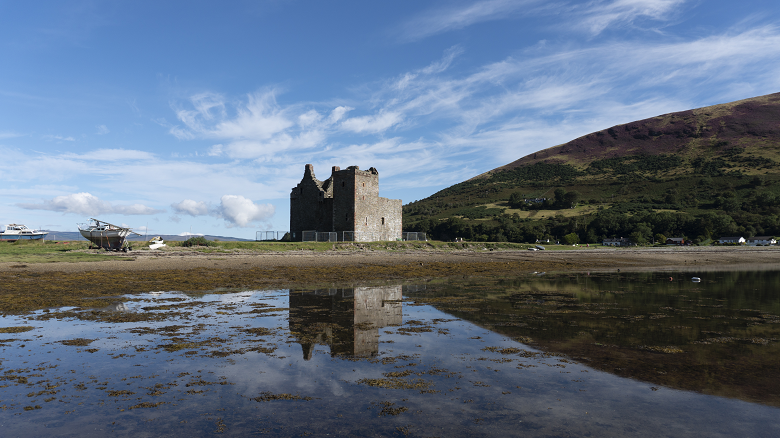
Lochranza Castle was one of the first sites tackled by our high-level masonry team. Its dramatic coastal location posed a challenge! The team initially inspected the exterior for safety concerns. The full inspection occurred in summer 2023, following the discovery of bats and otters in the area. To ensure responsible progress, we obtained a special license from NatureScot before proceeding. Lochranza Castle boasts a picturesque setting, popular with local boat owners. While the public enjoyed access to the surrounding spit during the inspection, it unfortunately led to an accumulation of marine equipment and vegetation. Our dedicated team, working alongside a local contractor and the Police, successfully encouraged the removal of boating gear, restoring the area’s natural beauty. Lochranza Castle will reopen on Easter weekend.
Crichton Castle

Extended closures have made some of our sites even more appealing to our furry or winged friends. Ecologists have spotted bats, birds of prey, and even beavers! This is why we carry out Ecological Assessments as part of the pre-inspection activity at all of our high-level masonry sites.
Crichton Castle, with its diverse bat population, will be one of our last sites to receive its inspection. It has a very small window of opportunity due to the five bat species that roost in the ruins, including a maternity roost for Natterer’s bats and a hibernation site for Pipistrelle bats. Because the site is used for both purposes by bats, any work undertaken has to take place in the small gap between seasons when the bats migrate between their winter and summer habitats. We hope to complete the inspection by mid-April, after which we can assess any necessary work or restrictions before reopening the castle. Visitors can still explore the beautiful surrounding grounds.
Spring into Action!
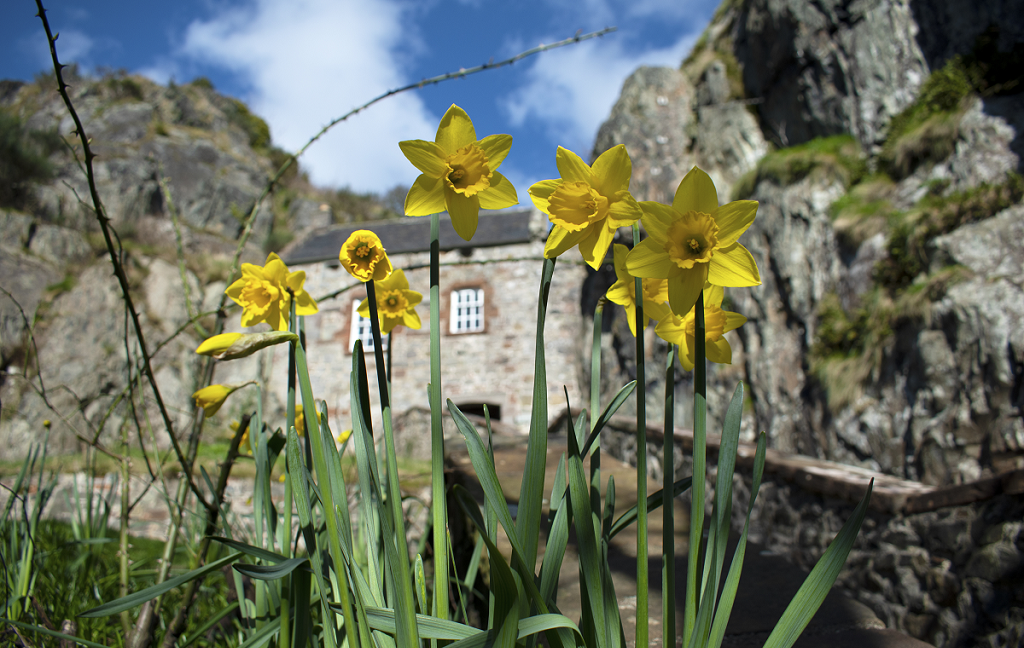
Daffodils at Dumbarton Castle
With these reopenings, plus our seasonal sites which open up at the end of March, over 91% of our sites will be open. You can plan your next adventure on the HES website, plus we’ll always highlight new openings on our social media channels. We also offer memberships and Explorer Passes for different visit frequencies.
There’s more information on the high-level masonry project on the dedicated website pages, as well as in our previous blogs: Behind the scenes: a monumental challenge and Progress update on our high-level masonry inspections.
We’re looking forward to welcoming you to a historic site soon!

